#including East and west Floridaes: and the Pecos River
Explore tagged Tumblr posts
Text
Washitaw Dugdumoundya - go see for yourself
information for the public about the Nation of people who are indigenous to the American continent. Many people are unaware that this Nation of people even exists at all. We are a multicultural, highly spiritual nation of aboriginal, indigenous Americans who were originally called Washitaw Mu’urs (or Ouachita as it was amended by others throughout our history). We accept both lineal and non-lineal citizens into our Nation. We DO NOT discriminate based on race or religion, as this is the heart of God and of our current Empress, Her Highness, Verdiacee “Tiari” Washitaw-Tunica (Turner) Goston El Bey. Her Highness Previous Spiritual Advisor of Spiritual Education and Information of the Ministry, Oukhara Zeshera, states No Longer Advisor), “All of us within our nation are creations of the Divine Creator, and we are all our Brothers and Sisters. We need to learn our past spirituality, so we can build as a nation. Remember, the first principle in Washitaw is LOVE!”
Imperial Royal Court French & Spanish “The Washitaw de Dugdahmoundyah was recorded as The Oldest Indigenous People on Earth in the final list of all attendees.”
In 1993, The Washitaw Indigenous Nation of Mound Builders received its United Nations number: 215/93. To date, the Empress, as one of the living heirs of Henry Turner, has recovered the title to 68,883 acres of land comprising most of the northern part of the ‘said state of Louisiana. The Washitaw never drew boundaries, We are the original inhabitants of all the lands from wherever you find mound sites you find part of the Empire in so called north America
( A-Meri- Ta ). The one letter rule change one letter to hide the truth they change the letter ” T ” into “C” from Meri-Ta, to A-meri-ca.
The area from Alleghenies to the Rocky Mountains, from Canada down to the Gulphe of Mexico, including East and west Floridaes: and the Pecos River, encompasses the domain of the Empire Washitaw de Dugdahmoundyah. A land mass over 30 million acres. This is one of the regions that the United States claim as part of the Louisiana Purchase.It’s the same region Abraham Lincoln coined as, The Egypt of the West.
The Ancient and Medieval American Mississippian culture 500-1500 AD
Going down a deep dive of the Mississippian mound culture of precolumbian United States.
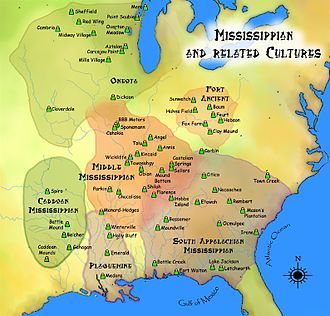
I knew some stuff about the topic, pretty basic and precursory information, but now I think I'm gonna do some more in depth research. It's just fascinating to learn how throughout the Mississippi river region and deep south there were large cities that rivaled medieval cities in Europe with populations in the tens of thousands. Cahokia Illinois for example.
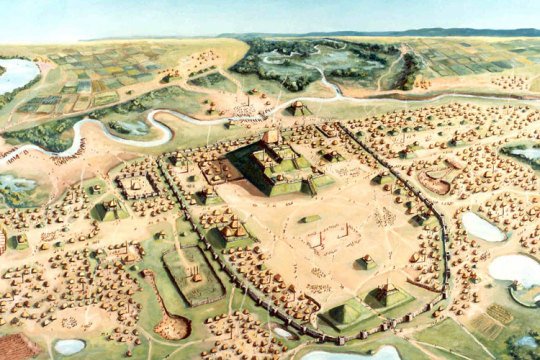

And they made all kinds of really cool artifacts
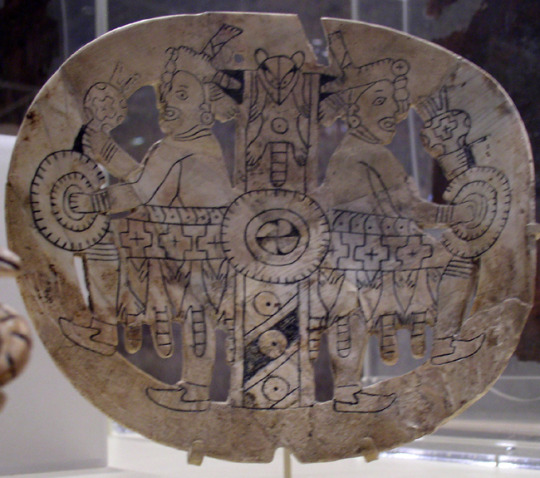
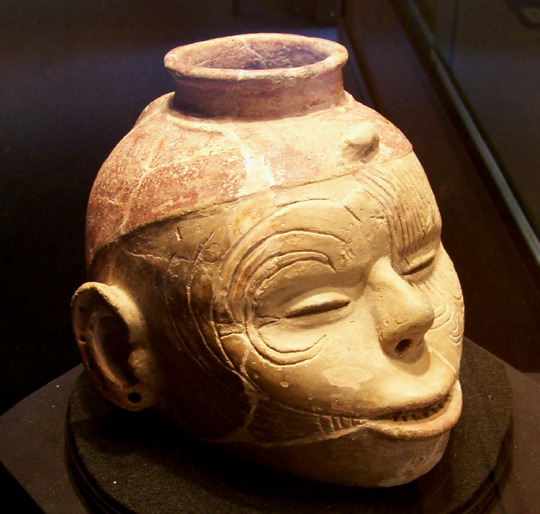
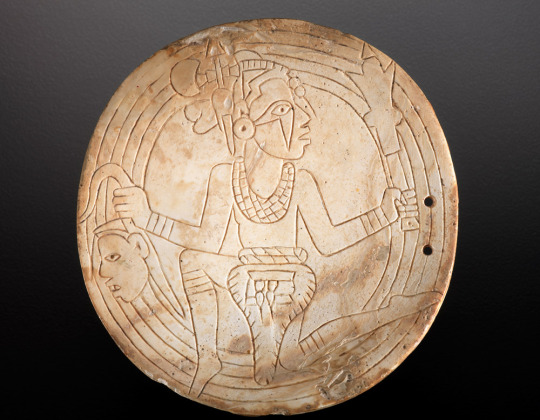
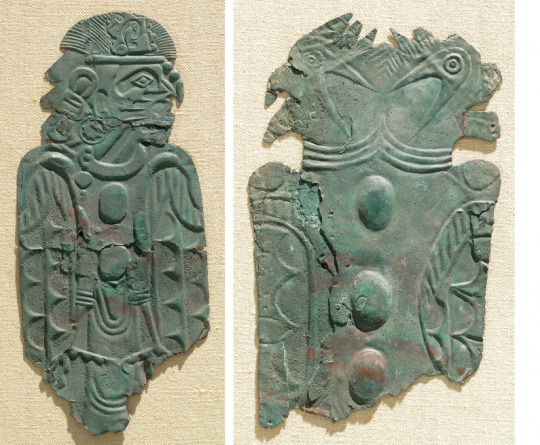
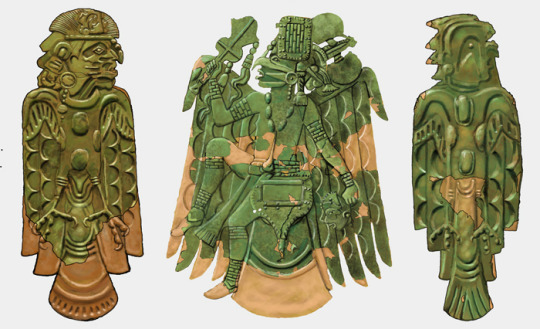
They had trade routes all over North America. For example copper from the Great Lakes region, shells from the Atlantic and Gulf Coast, and Obsidian from Mexico. In addition their own goods have been found exported to archaeological sites all over North America.
Then around the 14th century the Little Ice Age started, which was basically a sudden drop in global temperatures lasting until the mid 19th century, which resulted in crop failures and famine worldwide. In addition large populations were already stretching the food resources and agriculture of the area. This resulted in the decline of urban culture among the Mississippians. At the time in Eurasia the same was happening, which helped bring about the Black Death. So there were hard times all around. The 14th century was a bad time to be alive almost everywhere. Final collapse occurred in the 16th century when smallpox swept through the Americas after European contact.
Unfortunately for us they had no system of writing, at least none that can be found. So we will probably never know their story and history as well as say the ancient Romans. All that we know is pieced together through archaeological findings and oral history of their modern descendants.
Anyway I'm gonna find some good audiobooks to listen to on the subject while I do my weightlifting.
#information for the public about the Nation of people who are indigenous to the American continent. Many people are unaware that this Nation#highly spiritual nation of aboriginal#indigenous Americans who were originally called Washitaw Mu’urs (or Ouachita as it was amended by others throughout our history). We accept#as this is the heart of God and of our current Empress#Her Highness#Verdiacee “Tiari” Washitaw-Tunica (Turner) Goston El Bey. Her Highness Previous Spiritual Advisor of Spiritual Education and Information of#Oukhara Zeshera#states No Longer Advisor)#“All of us within our nation are creations of the Divine Creator#Imperial Royal Court French & Spanish “The Washitaw de Dugdahmoundyah was recorded as The Oldest Indigenous People on Earth in the final li#The Washitaw Indigenous Nation of Mound Builders received its United Nations number: 215/93. To date#the Empress#as one of the living heirs of Henry Turner#has recovered the title to 68#883 acres of land comprising most of the northern part of the ‘said state of Louisiana. The Washitaw never drew boundaries#We are the original inhabitants of all the lands from wherever you find mound sites you find part of the Empire in so called north America#to A-meri-ca.#including East and west Floridaes: and the Pecos River#encompasses the domain of the Empire Washitaw de Dugdahmoundyah. A land mass over 30 million acres. This is one of the regions that the Uni#Washitaw Dugdumoundya
361 notes
·
View notes
Photo

THE MOST DOG-FRIENDLY NATIONAL PARKS
THE MOST DOG-FRIENDLY NATIONAL PARKS: For any dog-loving traveller, leaving behind our furry friend can often be the hardest part of going on any vacation. Most national parks have strict pet policies and limit them to small areas of the parks. Luckily, there are quite a few national parks that are very pet friendly! So whether you are planning on a just a day trip or a longer stay, there are many national parks to visit that are pet friendly. Here are some of the best national parks to bring along your canine companion! Acadia National Park* Acadia National Park on the coast of Maine is quite a pet friendly park! Dogs are welcome on almost all of the 120 miles of hiking trails that Acadia has to offer making it a great option if you're looking to hike with your pooch. Pets are also welcome on all 45 miles of carriage roads within the park. There are only a few trails that require iron rungs for climbing, making them the only trails that do not allow animals. Dogs are also allowed in nearly all of the public areas at the park - even on the shuttles that go around the park. The only places they are not allowed are Duck Harbor Campground, Wild Gardens of Acadia, Echo Lake Beach, and Sand Beach during high season (mid-May to mid-Sept). Your pup is welcome to join you anywhere else in Acadia National Park making it an ideal spot for your next adventure! Click here to read about the Best Things To Do in Acadia National Park! White Sands National Park White Sands National Park in New Mexico is another park very welcoming to pets. You can explore all of the trails in the park together! The only place that animals are not permitted is inside buildings. Dogs must be leashed but are welcome on all trails, sand dunes, and picnic areas. If you are planning on visiting White Sands, be sure to pack plenty of water for both of you. The dry desert air and high elevation can lead to dehydration and the only place with water access is at the visitors center. Click here to read about the Best Things To Do in White Sands National Park! Hot Springs National Park Located in Arkansas, Hot Springs National Park is a unique national park. The park encompases a historic downtown and forested hiking area. If you're eager to explore the hiking trails, all 26 miles of the available trails are pet friendly for you and your leashed dog. In the historic district, animals are not permitted in the bathhouses at the park, but you and furry friend are welcome to enjoy a stroll on the sidewalks on Bathhouse Row and along the Grand Promenade. If you are looking for a longer stay at the park, Gulpha Gorge campground is a great option if you're looking for a pet friendly camping option. Click here to read about Hot Springs National Park! Cuyahoga Valley National Park Cuyahoga Valley National Park, located outside Cleveland, Ohio, offers 125 miles of trails throughout the park - and your dog is welcome to join you on pretty much all of them! There are many different types of trails passing through fields, wetlands, and woodlands, so it's a good idea to check in with a park ranger to figure out which trails are most suitable for your needs. The only places where pets are not allowed include inside any park building (with the exception of service dogs), on the Cuyahoga Valley Scenic Railroad Train, and on the East Rim mountain bike trail. Click here to read about the Best Things To Do in Cuyahoga Valley National Park! Petrified Forest National Park* Not only does Petrified Forest National Park permit dogs at the park, they're encouraged to join you on your visit! You and your pup are welcome on all the trails throughout the park and in the backcountry - as long as dogs are leashed. Keep in mind that there is no access to water in the backcountry, so be sure to pack enough water for both of you on your adventure. You and your canine companion can also camp in the park if you'd like. You'll just need to pick up a free backcountry permit at the Painted Desert Visitor Center or Rainbow Forest Museum. There are no established campsites, which means you can camp wherever you'd like to within the park! Click here to learn more about Petrified Forest National Park! Grand Canyon National Park* Located in northern Arizona, Grand Canyon National Park is another park that is very pet friendly! You and your dog are welcome to enjoy all 13 miles of the South Rim Trail. Yavapai Lodge is located inside the park and has pet friendly rooms if you are looking for an overnight option. Animals may also be boarded at the South Rim Kennel. Whether you plan to visit Grand Canyon National Park with or without your canine companion, it is important to note that the high elevation and dry climate can lead to dehydration. Even if you're only planning a short stroll or hike, be sure to bring plenty of water - and don't forget a dog bowl! Click here to read about the Best Things To Do in Grand Canyon National Park! * These national parks participate in the Bark Ranger Program. This program was established to help encourage visitors to engage in responsible and respectful behaviors with their dogs while in the parks. What It Takes to be a Bark Ranger Bag your pet's waste Always wear a leash (6-foot max) Respect wildlife (give them their space) Know where you can go (which trails/areas are pet friendly) Each participating national park sells a unique tag for your dog's collar, so you and your dog can collect a tag from each park as you embark on your park adventures! List of All Bark Ranger National Park Service Units Acadia National Park – Maine Agate Fossil Beds National Monument – Nebraska Biscayne National Park – Florida De Soto National Memorial – Florida Devil's Tower National Monument – Wyoming Fort Vancouver National Historic Site – Oregon & Washington Friendship Hill National Historic Site – Pennsylvania Gateway Arch National Park – Missouri George Washington Carver National Monument – Missouri Golden Spike National Historic Park – Utah Grand Canyon National Park – Arizona Gulf Islands National Seashore – Florida & Mississippi Harper's Ferry National Historical Park– West Virginia Hopewell Culture National Historic Site – Ohio Independence Hall National Park – Pennsylvania Indiana Dunes National Park – Indiana Little River Canyon National Preserve – Alabama Minute Man National Historical Park – Massachusetts Montezuma Castle National Monument – Arizona Natchez Trace Parkway – Alabama, Mississippi, Tennessee Olympic National Park – Washington Pecos National Historical Park – New Mexico Petersburg National Battlefield – Virginia Petrified Forest National Park – Arizona Redwood National Park – California San Juan Islands National Park – Washington Sagamore Hill National Historic Site – New York Tonto National Monument – Arizona Tuzigoot National Monument – Arizona Vicksburg National Military Park – Mississippi https://national-park-posters.com/blogs/national-park-posters/the-most-dog-friendly-national-parks?utm_source=rss&utm_medium=Sendible&utm_campaign=RSS
0 notes